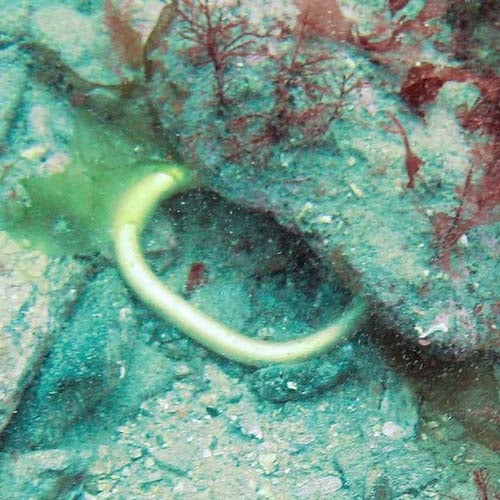Britain's oldest shipwreck discovered off Devonshire coast

Your support helps us to tell the story
From reproductive rights to climate change to Big Tech, The Independent is on the ground when the story is developing. Whether it's investigating the financials of Elon Musk's pro-Trump PAC or producing our latest documentary, 'The A Word', which shines a light on the American women fighting for reproductive rights, we know how important it is to parse out the facts from the messaging.
At such a critical moment in US history, we need reporters on the ground. Your donation allows us to keep sending journalists to speak to both sides of the story.
The Independent is trusted by Americans across the entire political spectrum. And unlike many other quality news outlets, we choose not to lock Americans out of our reporting and analysis with paywalls. We believe quality journalism should be available to everyone, paid for by those who can afford it.
Your support makes all the difference.A 3,000 year old Bronze Age trading vessel – the oldest shipwreck ever found in British waters – has been located off the coast of Devon in South West England.
It went down around 900 BC carrying a precious cargo of tin and copper ingots from the continent, and has lain undetected on the seabed in just eight to ten metres of water in a bay near Salcombe ever since. Experts have hailed the discovery – one of only four Bronze Age vessels found in British waters – as “extremely important,” and “genuinely exciting.”
Investigation and recovery work on the boat’s cargo was carried out by archaeologists from South West Maritime Archaeological Group (SWMAG) between February and November 2009, but the find was only made public this month at the annual International Shipwreck Conference in Plymouth.
295 artefacts – with a combined weight of 84 kilograms – have been retrieved so far, including weapons and jewellery, alongside abundant raw metal.
This cargo points to a healthy and sophisticated trade network that existed between Britain and Europe during the Bronze Age. The find as a whole is testimony to the incredible seafaring capabilities of prehistoric Britons.
A Bronze Age settlement is known to have existed on the coast near Wash Gully where the wreck was found – the boat was probably attempting to land there when it came a cropper just 300 yards from the shore. The waters around this stretch of the Devonshire coast are notoriously treacherous. A nearby reef hints at the most obvious reason for the vessel’s demise.
Sadly none of the ship’s structure remains – most likely it has rotted away over the centuries. But experts have speculated that it was probably a “bulk carrier” about 12 metres long by almost two metres wide, and made out of long timber planks or a wooden frame with animal hide stretched across it. It would have been crewed by about 15 men and powered by paddle.
A narrow row boat might sound like an exposed and treacherous way of crossing the English Channel, but it’s thought that intrepid Bronze Age mariners would have used vessels like this to criss-cross the waterway with some frequency. And directly between Devon and France too, rather than skirting the coast up to the narrower stretch between Dover and Calais, as some people have suggested they did.
The large quantity of copper and tin found aboard the ship – which appears to have come from scattered locations as far afield as the Iberian Peninsula, Switzerland, France or Austria via a wide and complex trade network – would have been used to make bronze, which was the key product of the period. The bronze would in turn have been used to fashion all from tools to weapons and jewellery.
Among other artefacts in the boat’s cargo were a bronze leaf sword, two stone objects that might have been slingshots, and three gold wrist torcs. Four golden Iron Age wrist torcs of European origin were found last year by a metal detectorist in Scotland – these new finds hint at how far back trade in luxury items with the continent stretches.
Academics from Oxford University have taken charge of investigating the discoveries, to see if their exact origins can be determined. It’s hoped that more artefacts will be raised from the seabed yet.
This cargo would have made a tidy profit for the ship’s Bronze Age crew had it reached land; 3,000 years late, it’s finally set to be cashed-in. SWMAG stands to net a healthy return on their find, with the British Museum due to individually value and purchase each piece over the next few weeks.
First photographs of Britain's oldest shipwreck
Join our commenting forum
Join thought-provoking conversations, follow other Independent readers and see their replies
Comments